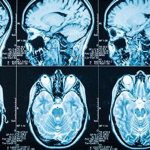
The maker of a drug used to treat ADHD and narcolepsy has recalled one lot of the medication after a pill mixup was discovered. The recall notice, issued by Azurity Pharmaceuticals Inc., states that one lot of Zenzedi 30-milligram tablets is being recalled after a pharmacist found antihistamine tablets in a bottle labeled as Zenzedi. The active compound in Zenzedi is dextroamphetamine sulfate, a stimulant used for the treatment of narcolepsy and ADHD. Meanwhile, the allergy drug found in the mislabeled bottles contains the sedative carbinoxamine, which has the opposite effect of a stimulant. The recall comes amid an ongoing national shortage of ADHD drugs, creating further frustration for people with ADHD who have struggled to find medications for their condition, CNN reported. The recall notice said that people who take carbinoxamine instead of Zenzedi have a higher risk of accidents or injuries and may have drowsiness, increased eye pressure, urinary obstruction and thyroid disorder. The recalled lot has the lot number F230169A and an expiration date of June 2025. Azurity added that it has not received any reports of serious injury related to the medication mixup. Consumers who have the recalled medication should return it to their pharmacy and call their doctor if they have any bad reactions to the drug. Problems may also be reported to the FDA’s MedWatch Adverse Event Reporting program. More information Drugs.com has… read on > read on >


















